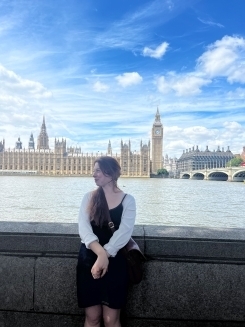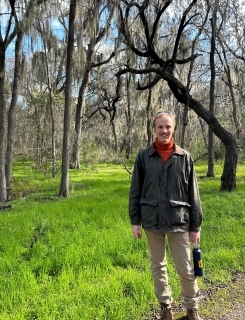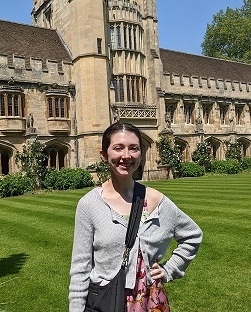Student Profiles
Learn more about the experiences of the alumni of Museum Studies in Oxford.

Elle Mason, Vassar College
My month abroad in Oxford with Middlebury’s Museum Studies program was chock full of dynamic and fulfilling learning about the structure of museums, heritage sites, and art history in the UK. Every day was slightly varied, with numerous visits to nearby museums and galleries, as well as bigger trips to London, Bath, and Compton Verney, to name a few. Our conversations with curators, directors, and tutors were informative and engaging, allowing us to delve into our interests within the sector.
On days not spent on trips and outings, we have a variety of workshops, guest lectures, as well as our regular classes with our tutors at St. Michael’s Hall. Every staff member in the program was highly informed about Oxford, and incredibly willing to offer their support to us. St. Michael’s Hall is located in an ideal location, with countless food options nearby, as well as the beauty of the colleges of Oxford all around. Even on days without class, there were plenty of things to do and get involved in Oxford or connected to one of the colleges.
My peers in Oxford came from a variety of academic interests, and as a student who had not done any museum studies yet, I felt that the program was a great introduction to the discipline. The group was small enough to get to know each other well in a short time, especially because we were able to share so many immersive experiences outside of the typical classroom setting.

Josh Sanders, Trinity College
The Museum Studies in Oxford one-month program was like a dream. I’m so glad I was able to be a part of it. As you can probably gather from the title of the program alone, it is heavily focused on the museum industry (particularly with a UK focus), and is perfect for people interested in working in that industry.
Every week contained a mix of seminars and day trips. The seminars were in the same building as the dormitory as well as guest lectures, which were thought provoking as well. We heard from academics and curators about topics including the Benin Bronzes and Leonardo da Vinci’s Salvator Mundi. For day trips, we took varying transportation: busses, trains, the Underground (arranged by the program administrators) to places including the British Museum, Sir John Soan’s Museum, Buscot Park, Blenheim Palace, and the city of Bath. These would consist of guided tours, talks by an administrator or tutor, or self-guided time. The staff at M-CMRS were wonderful and helpful if you had any questions.
One of my favorite places we went was Compton Verney. We spent four days in a row there and heard lectures from a variety of museum staff about their specific job roles and about the museum operations in general. I loved when we travelled into the English countryside. It is charming and picturesque with its sheep pastures, stone walls, cottages/houses and flowers.
In addition to day trips and classes, there is a good amount of time to explore the city of Oxford. I enjoyed attending Evensong and church services at different colleges, jogging through Christ Church Meadows, reading in the Bodleian Library, and trying out local food and drink establishments. Our class did a group activity where we went punting. That was a unique and fun experience.
All in all, it was a whirlwind of fun and learning in a medieval city unlike anything in the United States, and I got to meet wonderful students from various places.

Greta Costello, Middlebury College
My month spent at the Middlebury College CMRS Museum Studies program was full of art-historic excursions and enlightening lectures.
We engaged in two courses during our time at St. Michaels’ Hall. How British Museums Work and Perspectives on Heritage were the main academic springboards for our field trips. We met with each of our two tutors twice per week in a collaborative, discussion-style seminar.
Museum trips were frequent and enriching, as we were so often led behind-the-scenes to view special collections of prints, handle artifacts, or break down logistics and marketing strategies with museum staff. While in the Christ Church Picture Gallery or the Victoria and Albert Museum, we were urged to engage closely with one object, presenting to our peers our considerations based on materiality, historicity, and metaphorical meaning. We were encouraged to be critical with regards to everything we saw and heard. The museum and heritage sector is no doubt ethically ambiguous, and as such many of our conversations were tied back to the morality of acquisitions and the logistics of repatriation and restitution.
St. Michael’s Hall was the central hub of the program. When we weren’t being swept off to tours and lessons, there were plenty of opportunities to try something new within the confines of St. Michael’s. I did a bookbinding workshop with our program librarian where I learnt some basic binding techniques, and another where I was able to handle some manuscripts in the program’s very own collection.
The bustling city was always calling. I enjoyed independent trips to the Ashmolean or the Museum of Modern Art, exploring the exhibits at my own pace, and contemplating the works with newfound friends at a local cafe. While there was plenty of exploring, this was coupled with calm moments analyzing course readings and working on projects and papers in quiet corners of bookstores (there were so many!).
